Technology and construction attractions
Technology
By using only the most up-to-date technologies,
we are able to raise the bar on the functionality and design of our outdoor
clothing. The most frequently-used technologies of the outdoor industry are
steam stitching, laser cutting + ultrasonic, and seamless technologies such as welding,
gluing, etc.
We use these technologies on some of our products as well, so below we will explain them in more detail.
Seam stitching
Seam stitching is a standard feature of outdoor clothing. It is possible to stitch seams, which is the most common method used, for example, by Mallet, Midi, etc. (hardshell, packlite); or it is possible seal them as does Trango and Eiger. At times, the expression “welding” is a better choice of words than sealing. Currently, sealing is used even for softshell materials (i.e., the inner fleece layer is smoothed out and tape is sealed right onto the membrane). With this method, the plausibility of a 100% waterproof and “sealed” softshell jacket becomes apparent. The trend is rather to “open up” softshell jackets and trousers to increase their breathability. Various tapes and protective overprints are produced in a variety of colors and designs. The only condition is a minimal production amount.
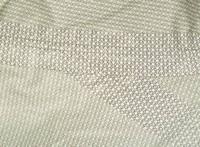

The taping process
is similar to how cut pattern section are sewn together. The only difference is
that tape is used on a jacket that is already sewn together or, alternatively, on
sewn parts. That part is then pulled on to taping rollers where heat and
pressure is used to apply the tape. The picture below illustrates a detailed
application of tape.
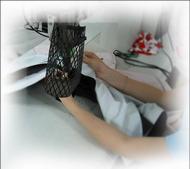
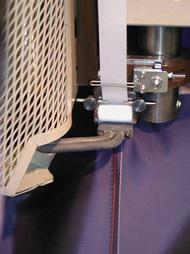
Laser cutting, ultrasonic, welding – types of seamless technology
Laser cutting is the most frequently-used technology for fabric cutting as well as for cutting out different shapes, logos, etc. This irreplaceable technology, of course, makes the final price of the product higher, yet quality and precision is at 100%. See, for example, the breathable vents below (Trango).
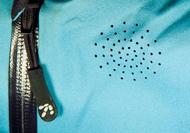
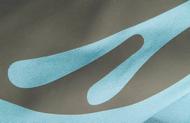
Ultrasonic is one of the ways in which seamless parts are joined with pattern cuts or other product parts. Again, this technology is very time consuming, yet is excellent from a design and functionality point of view. So far, Direct Alpine uses this technology, for example, on the Guide jacket (w08).
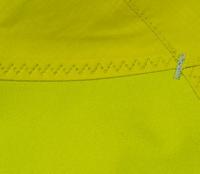
Welding is today an irreplaceable technology for the clothing industry when it comes to seamless binding. Compared to other technologies, it is precisely welding technology that has pushed design and functionality possibilities the furthest. The majority of clothing factories keeps tabs on their know-how by making sure that welding rooms are not freely accessible. Most commonly, the welded parts of products are pockets, patches, protectors, etc. – for example, we use welding on our Peak, Trango, and Mallet jackets.
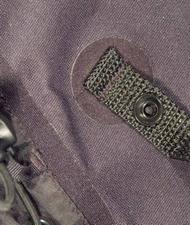
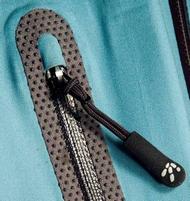

Welding technology has been in use approximately since the year 2000. Welding means joining two pieces of the same or different materials together using a special joining material. Sometimes welding is also referred to as seamless, laminating. or backing technology. Fabrics are joined together by a special “tape” that is melted using heat or ultrasonic (high-frequency radiation). Among the advantages of welding technology are the effects it has on design and functionality (e.g., thanks to welding seams are flat).
Design features
Hybrid system
The main aim of the Hybrid system is to find the balance (joining different kinds of materials) or optimal functionality of a product (“WWV” – waterproof, windproof, vapor permeability). Optimizing the functionality of a garment can be done by joining membrane and non-membrane materials and finishing them with functional knitting (Peak, Glider, Lizzart).
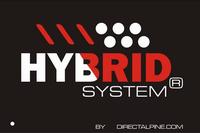
Nano tech
Nano tech is excellent fabric protection against permanent soiling, whereas it also makes the fabric waterproof without compromising on permeability nor the feel of the fabric. When nano particles (1/1000 size of human hair) are added to the fabric structure, water and dirt are not able to penetrate the fabric and thus remain on the surface. Nano technology is permanent and without any lasting effects on the fabric’s features (touch, permeability, etc.).

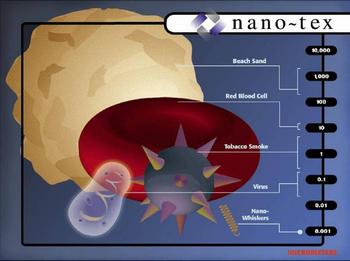
Fresh Cool
This type of final fabric adjustment was developed based on the requirements of DIRECT ALPINE for materials used for Badile trousers and Peak jackets in order to increase their functionality. It is a technology of one-sided WR and quick-dry (wicking) finishing.

Cut positioning
Cut positioning is the effective positioning of cut pattern sections in order to achieve maximum functioning, namely in terms of elasticity. Various positioning possibilities are quite apparent below, for example, on the Peak jacket (arrows show the way that particular cut sections stretch).
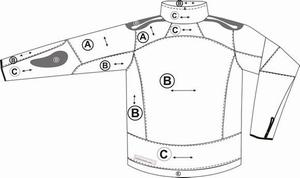
Recco
Recco is an avalanche rescue system that utilizes a reflection from a Recco® reflector (mirror affixed to clothes) which is then received by the Recco® detector (used by rescue groups). This patented Swedish system is mainly used in the Alps and was introduced into our apparel line in the winter of 2008-2009.

